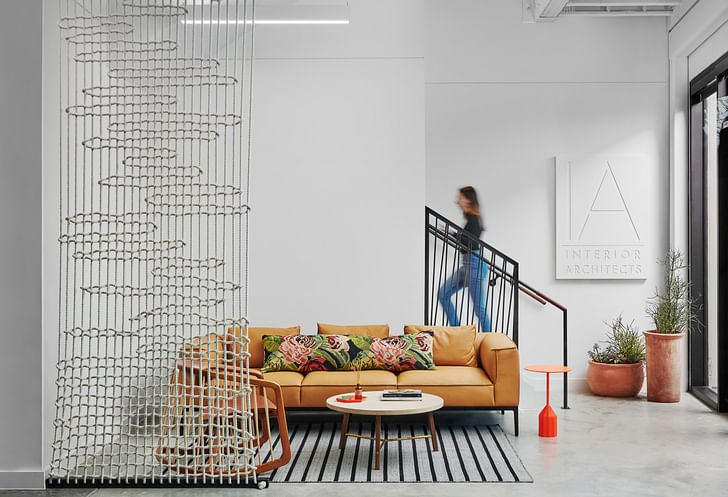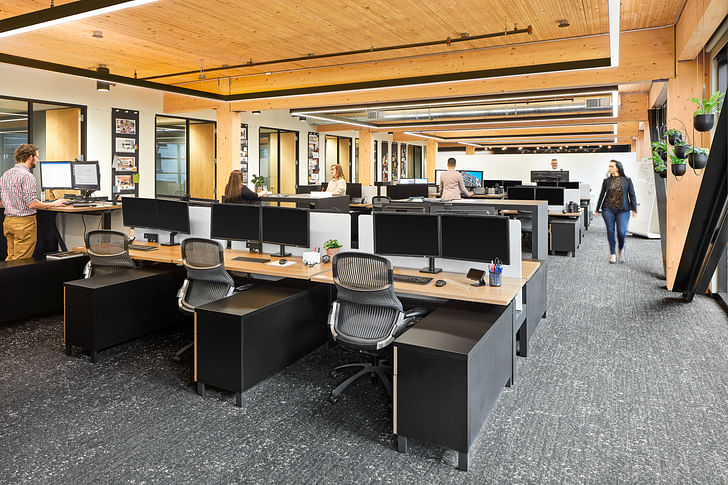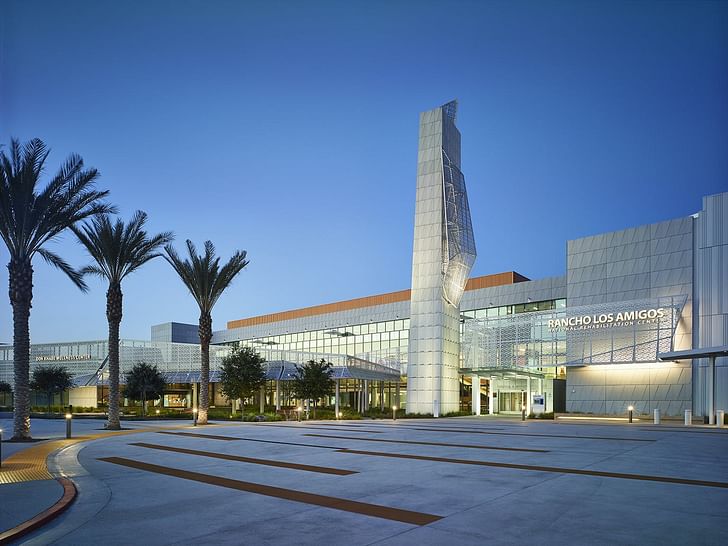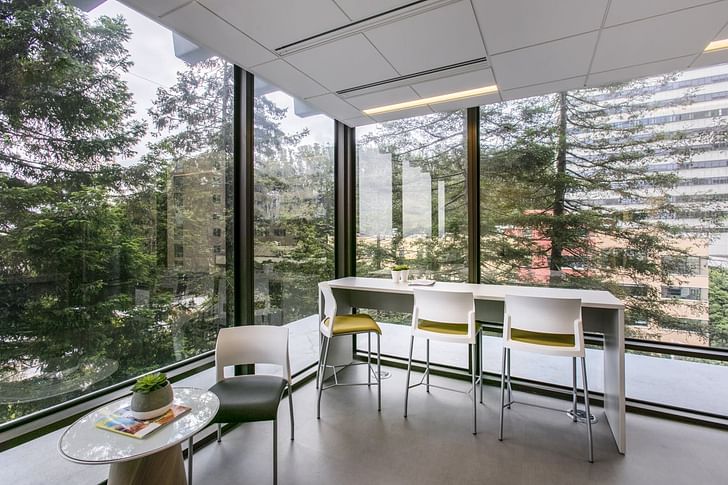

Throughout 2020 and 2021, the world of work has been subject to a relentless evaluation, triggered by the COVID-19 pandemic. Conversations around remote working, asynchronous office hours, and workers’ wages have gained added agency, as almost all economic sectors seek to balance health and safety with turnover and productivity. Stepping back from specific employment topics such as these, COVID-19 has also caused a more fundamental re-evaluation of how work shapes our lives. A study earlier this year found that 66% of unemployed Americans were considering changing their occupation, dwarfing levels seen during the 2008 recession, while research by McKinsey found similar metrics even among those still in employment.
Within this context, it is perhaps no surprise that the topic of employee ownership of businesses has gathered pace. In a time where many are critically reflecting on how meaningful or fulfilling their core occupations are, the idea of employment generating results for the employee beyond a monthly salary, and a voice beyond tiring annual feedback sessions, is an attractive offer.
A growing conversation around employee-owned businesses has gained traction in the architecture community in recent months, spurred by decisions from large firms such as Zaha Hadid Architects to move towards employee ownership. Architecture and design are inherently collaborative acts, far removed from the historic idea of a singular master-builder or starchitect. The idea that the collaborative act of architecture, impossible without the efforts of junior or mid-level employees, would be performed by businesses that mirrored this collaboration in their management and fiscal structures seems natural.

To further explore this point, we spoke with three architecture firms that have transitioned to employee-owned businesses. US-based IA Interior Architects and Taylor Design operate along an Employee Stock Ownership Plan (ESOP), which sees the companies’ shares owned by employees via an ownership trust. ESOPs are the most popular form of employee ownership in the United States, with 6,600 ESOPs covering more than 14 million participants across the country. Meanwhile, UK-based Hawkins\Brown operates a structure that places a strong emphasis on the democratic representation of employees in the decision-making process.
Despite the varying legislative approaches exhibited between the United States and elsewhere, the three firms we spoke to are unanimous in their view that employee ownership has been of significant benefit to their businesses, their output, their clients, and their staff; and is a structure worthy of consideration for their peers.

For US-based international firm IA Interior Architects, the decision to establish an ESOP began in 2012. As the company’s founder David Mourning neared retirement, he sought a way to sell the firm he owned back to itself, rather than to an outside entity, resulting in a succession plan which allowed the firm to purchase Mourning’s shares over time. “We brought in a consultant that interviewed the firm’s current leadership, and to ascertain the smoothest path forward,” explains Tom Powers, the firm’s Co-President and CEO. “The financial consultants helped develop a framework and plan.”
The resulting ESOP created by IA allows for workers to attain an ownership interest in the company based on the number of hours they work in a given year. “Our ESOP is not limited by hierarchy or experience,” Powers explains. “It is intended to give every employee, regardless of seniority or experience, an opportunity for ownership.” This ownership comes in the form of company stock which is held in a trust overseen by an independent trustee. When an employee moves on from IA, their share of the ESOP is then paid out to them by the firm.

Over the past decade, Powers has seen the benefits of the ESOP structure for employees, the company, and clients. For employees, the ESOP offers an insight into the valuation and progress of the company and encourages them to act in the best interests of the firm. “It is not intended to give the employees additional authority in managing the company beyond their specific roles,” Powers elaborates. “Rather, it is primarily an avenue to share in the financial success and growth of the practice.”
Clients are aware that staff have a vested interest in the success of their project, as it will add to the overall success of the firm. — Tom Powers, IA Interior Architects' Co-President and CEO
In addition, as the ESOP shares undergo an annual third-party valuation, the firm can have confidence that the value of the company accurately reflects the current state of the firm, and is not inflated or deflated by arbitrary factors. For clients, the firm’s adherence to the requirements of an ESOP structure also signals regulatory competence, rigor, and continuity. “They also like to know that each staff member they interact with is an owner,” Powers adds. “Clients are aware that staff have a vested interest in the success of their project, as it will add to the overall success of the firm.”
The 36-year-old practice has also sought to incorporate their extensive international network into the ethos of employee ownership, even if ESOP is only a specific US structure. “We have three international offices that are a vital part of IA but are not able to participate in the ESOP,” Powers explains. “Each year, we provide a cash payment to the national retirement programs in Canada, the UK, and Ireland, for all eligible employees, reflecting the ESOP distribution they would have received under the US program. This way, every employee can financially benefit from the firm’s success regardless of location.”
Almost a decade after establishing their ESOP structure, IA sees benefits to other firms following their example. “An ESOP can be a powerful approach to transitioning firm ownership if the overall goal is to keep the organization true to its founding principles,” Powers explains. “It can also be a fiscally attractive way for a founder to exit the firm without crippling the company with insurmountable debt or bringing in a third party for funding. An ESOP is easily scalable, so if the original entity is relatively small, but there are plans for significant growth, an ESOP may be a good option.”
However, the firm advises that a transfer to employee ownership should not be undertaken without external input. “It is important to have legal advice from an expert that is familiar with the workings of an ESOP,” Powers notes. “It is also crucial to have financial advice from an organization that is experienced with structuring an ESOP as well as provide employees with advice on tax-friendly paths forward after their employment ends. Since an ESOP can be costly to establish and maintain, careful consideration should be given in order to determine if it is the right approach for your organization.”
For California-based Taylor Design, the genesis of their ESOP structure is strikingly similar to IA’s. Originally founded as a sole proprietorship by Linda Taylor in 1979, the firm’s transfer to an ESOP began in 1996 when Taylor began reflecting on the firm’s structure following her retirement. “Linda realized her success was made possible by building a team of dedicated designers,” says Gary Davidson, CFO at Taylor Design. “She decided that since these employees were already acting as owners, she should make this status official. The ESOP structure satisfied Linda’s desires to exit the firm gradually over time, share the benefits of ownership, and give long-term resilience to the firm she created. It was a win-win for everyone involved.” As a measure of this success, the firm was recently named in the 2021 Best Firms To Work For Awards by AEC management consulting firm Zweig Group.
Team members take pride in being an owner. They look out for the firm’s success and support each other individually. — Gary Davidson, CFO at Taylor Design
Like IA, the ESOP structure at Taylor Design is less about changing the day-to-day operating and decision-making structure within the firm’s leadership, and more about fostering a culture of responsibility within the firm. “Our external ESOP trustee largely stays in the background from a governance standpoint, recognizing that informed internal management is more productive,” Davidson notes. “They will only step in if they feel that the shareholders may be at risk.”
Instead, Davidson sees employee ownership as a means of fostering a collective attention on design quality. “Team members take pride in being an owner,” Davidson explains. “They look out for the firm’s success and support each other individually. The primary operational benefit that the ESOP fosters is the underlying culture of shared success that affects every business decision.”

As well as echoing the client, employee, and employer-facing benefits noted by IA, Davidson sees Taylor Design’s ESOP as an important factor in recruiting talent. “We’ve found that people in the design and creative industries are somewhat entrepreneurial to begin with, and naturally gravitate to positions and firms where they are given some autonomy and ownership,” Davidson explains. “They enjoy collaboration and will look for ways to creatively improve the business. While we also reward staff through bonuses and good wages, it is the direct connection between the firm’s success and the individual’s success over the long run that makes the ESOP structure unique. As the firm’s value increases, so too does the value of each employee’s ESOP account.”
While Davidson sees the ESOP structure as a resounding success for design, culture, and communication across their five California offices, he acknowledges various challenges from a bureaucratic standpoint. “Generally, I’ve found both state and federal lawmakers are supportive of ESOPs, particularly as the strong retirement position afforded by an ESOP can ease pressure on programs such as Social Security,” Davidson explains. “However, because we are 100% owned by the ESOP trust, we have experienced an inability to qualify for some programs designed to advantage women or minority-owned businesses. As a single institutional owner, the trust doesn’t qualify for these programs even though our ownership mix within the ESOP participant base may.”

Despite these challenges, Davidson remains supportive of other firms transferring to employee ownership, particularly in the name of company resilience. “If you’re only looking at an ESOP as an exit strategy to maximize your return and get out quick, an ESOP is not for you,” Davidson warns. “If however, you’re willing to exit your firm gradually, you’re perhaps willing to give up some of that big annual bonus to help the transition happen, you have faith in your upcoming leaders, if the firm already has a strong culture that would thrive under shared ownership, and you feel a desire to see your firm succeed well into the future, then an ESOP may be the perfect vehicle for you.”
People in the design and creative industries are somewhat entrepreneurial to begin with, and naturally gravitate to positions and firms where they are given some autonomy and ownership. — Gary Davidson, CFO at Taylor Design
However, Davidson reinforces the warning that an ESOP structure requires diligent maintenance. “An ESOP does come with some administrative baggage — legal fees, trustee fees, valuation fees, third party administrator fees, and strategic advisor fees. And it can be time-consuming for those in the finance arm of the business,” Davidson notes. “An ESOP may not make sense for firms that are just too small to handle the additional overhead expense. Similarly, it is important to form a relationship with a bank who understands ESOPs and understands that they may not have access to a single person or group of people with a majority stake. This comes up often when dealing with lending and leasing situations.”

Firms such as IA and Taylor Design offer valuable case studies on the long-term benefits of an employee ownership structure within a US context. However, while ESOP is a distinctly American structure, employee ownership remains a growing phenomenon in architecture firms worldwide. In December 2021, Zaha Hadid Architects became the latest high-profile adopter of employee ownership, following examples set by large-scale studios such as Arup, Make Architects, and Allford Hall Monaghan Morris. Today, over 20% of the UK’s 100 largest architecture practices operate an employee ownership business model.
One such firm is Hawkins\Brown, a leading UK practice whose attention to employee welfare has seen them recognized as Practice of the Year at the 2021 AJ100 awards, having been shortlisted for the Employer of the Year award in 2019, 2018, and 2017. While Hawkins\Brown announced their transition to employee ownership in September 2021, the move reflects an underlying employee-centric business culture which stretches back to the company’s founding in 1988.
Over 20% of the UK’s 100 largest architecture practices operate an employee ownership business model.
“Fundamentally, we seek to operate a genuinely collective ownership model, where everybody’s views are considered, both individually and collectively, for both long-term and day-to-day operating decisions,” says Alastair Roberts, COO at Hawkins\Brown. “There has always been a strong sense of ownership within the practice over the years, with a number of mechanisms designed to ensure the employee’s voice is heard and considered.”

While IA and Taylor Design’s transfer to employee ownership was prompted by changing leadership within the firm, the year-long process of transferring Hawkins\Brown to employee ownership was the result of a long-running aspiration to evolve the firm’s ownership structure. Established by the firm’s two co-founders as a Limited Company in 1988, the firm transitioned to an LLP (Limited Liability Partnership) in 2010 to broaden the firm’s ownership to 16 partners. “The LLP structure was a positive step in democratizing the firm’s ownership,” Roberts reflects. “However, when seeking to expand ownership once again to our 300+ employees, the LLP structure had served its purpose. We considered a number of structures to develop the business, but having observed the growing prevalence of employee ownership in the UK architecture sector, including among firms we have great respect for, we explored it for ourselves. It soon became clear that the structure aligned with our ethos, and concluded it was the appropriate next step for the business.”
As everyone is now a co-owner, it will be important to maintain a high level of constant, transparent communication within the firm. It never stops. — Alastair Roberts, COO at Hawkins\Brown
Reflecting on the process of installing an employee ownership model, Roberts echoes the advice of IA and Taylor Design to seek legal advice to tackle the structure’s complex legislative undercurrents. However, Roberts also emphasizes the value of speaking with other architecture firms that have already completed the process. “We are a collaborative sector, which often shares thoughts among ourselves about matters beyond the design of a building such as PI insurance,” Roberts explains. “Firms that have become employee-owned have been very open to sharing their experiences. Speaking with firms about how they approached the process, and what they would have done differently, was immensely valuable for us.”

In addition to communicating with other practices, Roberts places a high importance on keeping staff informed about the process, a task made difficult at Hawkins\Brown given their employee ownership transition occurred largely during a period of COVID lockdown in the UK. “Our staff were excited about the idea,” Roberts recalls. “They carried out their own research on the topic, which generated questions and conversations within the practice. We found it effective to supply as much detail as possible to our staff about what the process entailed. As everyone is now a co-owner, it will be important to maintain a high level of constant, transparent communication within the firm. It never stops.”
Rather than changing our culture to align with the new model, our culture was already accommodated by the model itself. — Alastair Roberts, COO at Hawkins\Brown
While the discourse surrounding ESOP structures in the United States places a strong emphasis on the employee’s ownership of company stock, and a financial benefit accumulated over the long term, Hawkins\Brown’s interpretation of employee ownership places its focus instead on giving the employee a voice in the company’s direction. This emphasis on employee input in decision-making is exemplified by the firm’s Employee Council, an elected body of employees which represents the views and interests of the firm’s 300 staff, fielding questions on their behalf to the firm’s operations board and trust board.
“There’s no defined legislative requirement to have this body, and no textbook way of structuring it,” Roberts explains. “Ours is an elected body of approximately a dozen people, which seeks to represent employees across various geographies, hierarchies, and roles.” Rather than an entirely new element, the Employee Council was an evolution of the firm’s Practice Management Group in place before the switch to employee ownership as well as three prior working groups which addressed issues relevant to diversity and inclusion, wellbeing, and corporate social responsibility.

The firm’s transition to an employee-owned business, therefore, offered Hawkins\Brown the opportunity to formalize these existing avenues under the umbrella of the Employee Council. This process of formalizing and reform, rather than establishing entirely new systems, was an underlying theme in the firm’s employee ownership transition. “We found that many of the elements encouraged under employee ownership were already in place, including profit sharing and employee consultation,” Roberts explains. “An employee ownership structure gave these elements further formality. Rather than changing our culture to align with the new model, our culture was already accommodated by the model itself.”
Looking after people and running a sustainable business are interdependent. — Alastair Roberts, COO at Hawkins\Brown
Concluding our conversation with Hawkins\Brown, we reflect on the oft-assumed conflict between staff welfare and company profits, one which is far from confined to architecture. “From the firm’s starting point, there has always been a belief that business and people are not in tension with each other,” Roberts reflects. “Looking after people and running a sustainable business are interdependent. If you have a thriving business, you can afford to look after your staff. If you look after your staff, they will be motivated to drive the business forward. Zooming into architecture, running a good business allows you to invest in good design. Subsequently, investing in good design is motivating for staff, and good for business.”
“It is a constant balancing act; but it works.”
Niall Patrick Walsh is an architect and journalist, living in Belfast, Ireland. He writes feature articles for Archinect and leads the Archinect In-Depth series. He is also a licensed architect in the UK and Ireland, having previously worked at BDP, one of the largest design + ...
6 Comments
Amazing information providing by your article, thank you so much for taking the time to share a wonderful article.
Excellent original article!
Very timely and thoughtful article. I would be interested in hearing more about larger international firms and how employee ownership can be implemented.
in light of SHoP and their union-busting efforts, this really puts esops in a poor light.
It is interesting that of the 3 models, the 2 "American" ones seem more about "total" compensation perhaps (?) and less operational/structural changes to decision making processes. You certainly aren't only one to have made similar points on ESOP in context of conversations around SHoP news.
I think because we're confusing "ownership" with "control" - of the few ESOP's I know people in, none really offer any additional "control" for the employees. certainly not compared to non-ESOP's. meaning - there's a leadership group, which tends to be self selecting, performance oriented, and makes the decisions. employees can help influence the direction of the firm in either ownership structure - but if you're not in that leadership 'group', there's not going to be a whole lot of decision making power.
Block this user
Are you sure you want to block this user and hide all related comments throughout the site?
Archinect
This is your first comment on Archinect. Your comment will be visible once approved.